Genre: Survival Horror Developer: Capcom Publisher: Capcom Players: 1 Released: 2000
Most people would probably agree that Resident Evil 2 has rightly earned a place at the top of gaming history. Capcom’s recent remake has brought it back into mainstream discussion and opened it to a whole new generation of survival horror fans. For many, these versions are the first they’ve ever played, and they don’t realize that the PlayStation classic also made an appearance on Sega’s Dreamcast. That’s unsurprising, to be honest. Why would they? Unlike the remakes, the Dreamcast port wasn’t much more than a tweaked version of the original, and while it was great to play a Resident Evil game on that hardware, there wasn’t much to it beyond the novelty.
Thinking about it, I guess I shouldn’t be too harsh. For the scant few gamers out there who never owned a PlayStation and those Dreamcast owners who wanted to see how Racoon City looked on their shiny new console, Capcom offered a chance to experience the iconic survival horror classic in all its undead-infested glory. And truthfully, there are some improvements worth experiencing, especially at the $19.99 price point the game had at launch. For such a low admission price, why wouldn’t fans check it out?
At its core, Resident Evil 2 delivered the quintessential tale of survival amidst a zombie apocalypse. Players stepped into the shoes of rookie cop Leon Kennedy and the determined Claire Redfield, navigating the desolate streets of Raccoon City in a desperate bid to escape the clutches of the T-virus outbreak. The dual scenario plot remained, giving players two different perspectives on the events unfolding and keeping them on the edge of their seats as they uncovered the sinister secrets lurking within Umbrella Corporation’s grasp.
For Dreamcast enthusiasts who missed out on previous iterations of Resident Evil 2, this latest release offered a decent incentive to dive into the franchise. The Dreamcast version faithfully replicated the content found in the PlayStation Dual Shock edition on PC, including the different game modes and bonus mini-games, the fourth Survivor and Tofu modes, while introducing additional features to enhance the gameplay experience, such as multiple difficulty settings. I’m sure that the Arrange Game mode was appreciated by newcomers and those looking to enjoy the game without too much trouble, adding more typewriter ribbons and access to the machine gun and rocket launcher early on – perfect for just plowing through each scenario quickly for some afternoon fun. Additionally, Capcom tossed in a gallery that unlocks more images the further one progressed in the game.
Visually, Resident Evil 2 received a significant facelift on the Dreamcast, boasting crisp high-resolution character models and smoother animations that breathed a bit of life into the haunting environments of Raccoon City. Background details popped with newfound clarity, but they weren’t perfect. The backgrounds in this version were rendered in the same resolution as the PlayStation original while the character models had a higher resolution. What that meant is that the characters looked much crisper and brighter than the environments, and the contrast was quite noticeable. It wasn’t bad, just noticeable. The overall effect didn’t change though, and Resident Evil 2’s character models and grotesque creature designs were still able to amplify the game’s immersive horror experience and create a genuine sense of fear and tension. Even after all these years, Resident Evil 2 still managed to scare the hell out of me with its horrific environment and the constant sense of isolation it created.
That haunting ambiance was enhanced by the game’s atmospheric soundtrack, which was awesome if you had a good speaker setup or some decent headphones. No, the Dreamcast port didn’t add anything new, but it didn’t need to. I’ve always loved the audio in Resident Evil games and often found it to be the scariest part of the games. From eerie corridor themes to the ominous silence of darkened rooms, Capcom did a splendid job with the audio design in Resident Evil 2. Even the subtle sound effects, like the shuffling footsteps of zombies and the menacing growls of monstrous creatures, were enough to make you think twice about playing with the lights off (how else would you play?).
However, even though I love Resident Evil 2 in all its forms, I must acknowledge that much more could have been done with this port, which was not without its flaws. The game’s clunky controls and awkward camera angles, while integral to ’90s survival horror charm, likely proved frustrating for some players accustomed to more fluid gameplay mechanics (particularly those reared on the newer, fully 3D remakes). Also, given that this was more or less a straight port of the PC version, I think Capcom missed a golden opportunity to take advantage of the more powerful hardware to make the game look truly next generation. The $20 price and low-resolution backgrounds suggests that this port wasn’t meant to be more than a quick conversion, and that’s a shame. I think Capcom just wanted to capitalize on the momentum of Code: Veronica, released a few months before, for some quick sales.
Nevertheless, Resident Evil 2 remains a landmark title in the survival horror genre, setting the standard for atmospheric storytelling and heart-pounding gameplay. The Dreamcast port didn’t do anything particularly new, but it did a solid job of bringing the whole zombie experience to Sega’s final console. I do admit that Carrier offered a more modern take on the genre and looked much more like a next generation title, but it didn’t have the pedigree or design polish that this amazing sequel did. Even with its issues, Resident Evil 2 for the Dreamcast is still a classic, and still offers a chilling journey into the heart of darkness, where every shadow hides new terror and every corner conceals untold horrors. Why not take one more trip to Racoon City?
SCORE: 7 out of 10

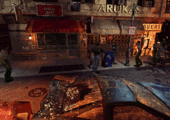
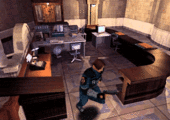
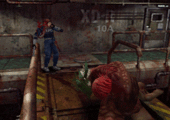
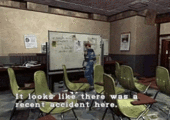
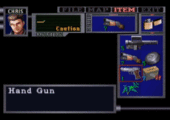
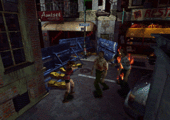
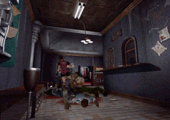
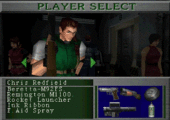
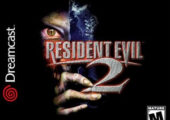
Recent Comments